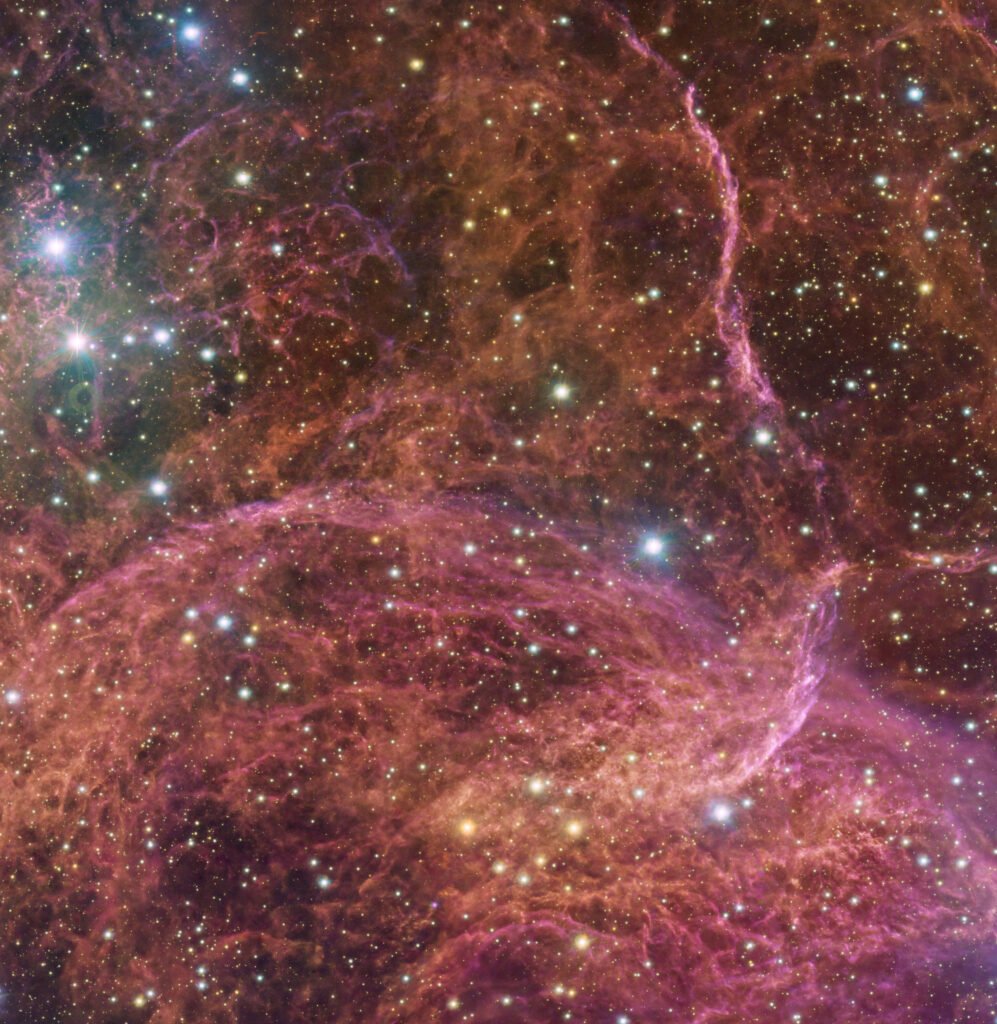The staff of the European Southern Observatory published a beautiful picture taken by the VLT survey telescope (VST). It shows a supernova remnant in the constellation Vela.

The Vela supernova remnant is located 800-900 light-years away in the constellation of the same name, being one of the closest similar structures to Earth. Once there was a massive star in this place. But about 11 thousand years ago, it exhausted its reserves of thermonuclear fuel, which led to the collapse of its core, accompanied by a colossal explosion. According to scientists, the supernova shone so brightly that it was visible even in the daytime sky.
As for the star, when it exploded, its outer layers were ejected into the surrounding gas environment. Shock waves passed through them, compressing matter and creating complex fibrous structures. The energy released at the same time warmed up the gas filaments, making them shine brightly. This is what the published photo demonstrates.
The superdense ball with a diameter of only a few tens of kilometres remained from the dead star, in which protons and electrons stuck together, forming neutrons. Such objects are called neutron stars. The neutron star in the Vela supernova remnant is located outside the region captured in the photo. It rotates at a speed of about ten revolutions per second.
The image of the supernova remnant was obtained using the OmegaCAM 286-megapixel camera installed on the VST. It can receive images through several filters, each of which allows the telescope to observe the light emitted in a certain colour. For this image, four filters were used, represented by a combination of magenta, blue, green and red colours. The VST has a 2.6-meter main mirror, which makes it one of the world’s largest telescopes designed to obtain panoramic views of the sky in visible light.
According to https://www.eso.org
Follow us on Twitter to get the most interesting space news in time
https://twitter.com/ust_magazine
